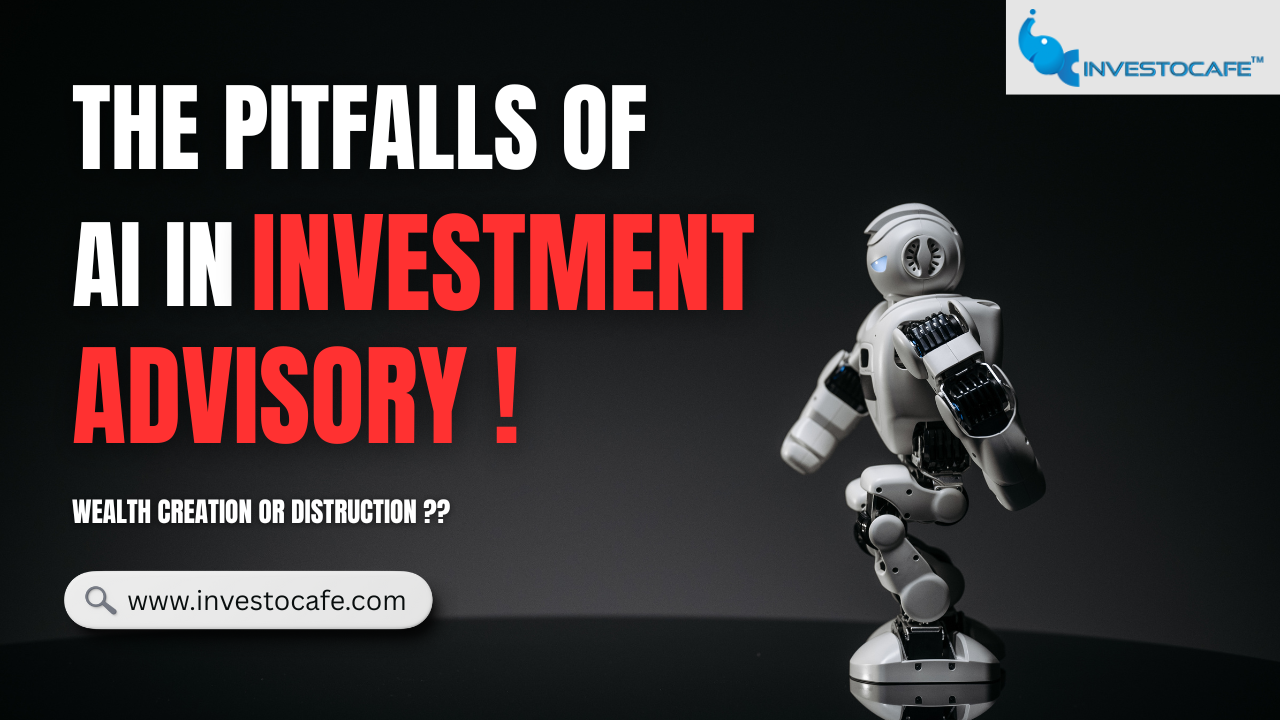
The Pitfalls of AI in Investment Advisory: How Generic Advice Can Destroy Wealth
31 Mar 2025Artificial Intelligence (AI) is revolutionizing the investment landscape, offering automated financial advice, portfolio management, and market analysis. While AI-driven investment advisory has made investing more accessible, it also comes with significant risks. Many investors unknowingly follow generic AI-generated advice, which often leads to poor decision-making and, ultimately, wealth destruction.
In this blog, we’ll explore where AI fits into investment advisory, its limitations, and how generic advice can do more harm than good.
The Dark Side of AI-Driven Investment Advice
AI-driven investment advice is often generic and lacks a deep understanding of an investor’s personal financial situation. Here’s how this leads to wealth destruction:
1. One-Size-Fits-All Approach
Most AI-driven platforms provide investment recommendations based on a limited set of inputs—risk tolerance, age, and investment goals. However, investing is highly personal, and factors like career stability, liabilities, future expenses, and personal preferences are often overlooked.
Example: A robo-advisor may recommend a standard 60-40 stock-bond portfolio for a 40-year-old investor. But if this investor has a highly volatile income (like a freelancer or entrepreneur), a more conservative approach might be needed. AI doesn’t factor in these real-life complexities.
2. Over-Reliance on Historical Data
AI models are trained on past market data, assuming that historical trends will repeat in the future. However, financial markets are dynamic, influenced by unexpected events like pandemics, wars, and regulatory changes.
Example: AI models failed to predict the COVID-19 market crash in March 2020 because they relied too heavily on past trends that didn’t account for global shutdowns. Investors who blindly followed AI-driven strategies suffered massive losses.
3. Lack of Adaptability to Market Crashes
AI struggles during black swan events—unpredictable market downturns. Many AI-driven strategies continue buying assets based on historical trends, failing to recognize that the market sentiment has fundamentally shifted.
Example: During the 2008 financial crisis, many quantitative trading algorithms kept recommending financial stocks, not realizing the systemic risk in the banking sector. AI-driven funds that relied on historical correlations saw catastrophic losses.
4. Short-Term Focus & Market Noise
AI often overreacts to short-term market fluctuations, leading to excessive trading, higher transaction costs, and suboptimal returns. Algorithmic trading strategies can amplify volatility rather than reduce it.
Example: AI-powered trading bots might sell off stocks after a short-term dip due to negative news, even if the company’s long-term fundamentals remain strong. This can lock in losses and miss out on future gains.
5. Failure to Account for Human Behavior
Investing is not just about numbers—it’s deeply psychological. AI does not account for fear, greed, panic selling, or irrational exuberance, which play a major role in market movements.
Example: During bull markets, AI might continue recommending aggressive investments, reinforcing overconfidence. In bear markets, it might recommend selling at a loss, reinforcing panic. Investors following such advice can end up buying high and selling low—the exact opposite of wealth-building.
6. Ignoring Macroeconomic & Geopolitical Risks
AI struggles to interpret complex macroeconomic factors like inflation, interest rate hikes, geopolitical tensions, and policy changes. Unlike experienced investors, AI cannot apply judgment to these unpredictable scenarios.
Example: AI might recommend tech stocks in a low-interest-rate environment, but when rates rise, many of these stocks decline. Without human intervention, AI-driven portfolios can suffer significant drawdowns.
How Investors Can Avoid Wealth Destruction
✅ Use AI as a Tool, Not a Decision-Maker
✅ Customize Your Investment Strategy
✅ Monitor & Adjust Regularly
✅ Diversify Across Investment Strategies
✅ Understand AI’s Limitations
✅ Consult Financial Experts
Final Thoughts
AI in investment advisory is a double-edged sword. While it offers automation, data-driven insights, and efficiency, it also comes with flaws that can lead to wealth destruction if followed blindly. Generic AI-driven advice often ignores individual circumstances, market psychology, and real-world unpredictability.
Investors should use AI as a tool, not a replacement for human expertise. By combining AI’s analytical power with personal judgment and strategic financial planning, investors can protect and grow their wealth—rather than fall victim to AI’s limitations.
Would you trust an AI to manage your entire investment portfolio, or do you believe human expertise is still essential? Let’s discuss in the comments!
Book one complimentary wealth management consultation with Investocafe’s certified advisor.
Happy Investing !!!
Visit www.investocafe.com to know about mutual fund investment options and stay on path of financial freedom
Written by: Tanish Goswami
To get in touch, write to tanish.goswami@investocafe.com or reach through www.investocafe.com.
To get in touch please visit us at investocafe.com

